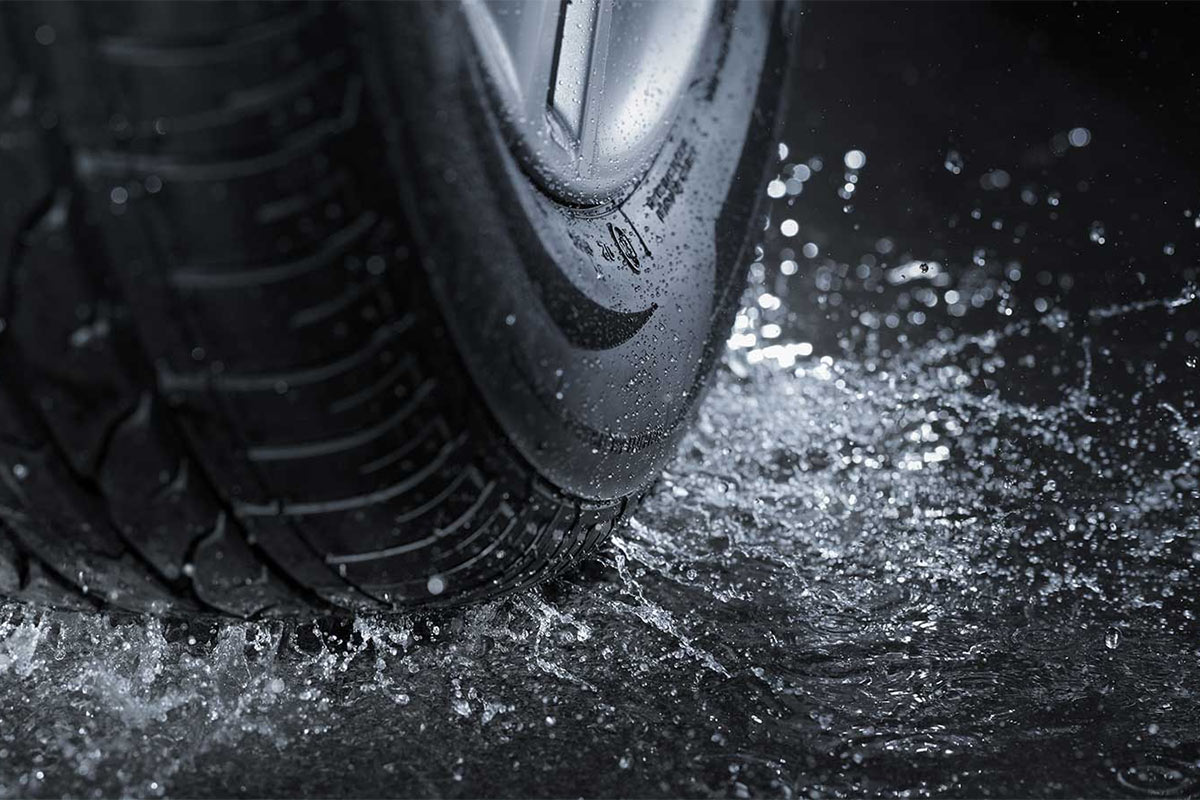Accidents, congestion and engine problems all increase during poor weather conditions. If you have to travel in heavy rain, follow our tips for staying safe.
Is your journey necessary?
If the weather is particularly bad and there are reports of flooding along your route, then it may be wise to change your plans and travel when conditions have improved. If you absolutely must travel, then take care and read on.
Planning ahead
- Give yourself lots of extra time to accommodate for congestion and travelling at slower speeds
- Make sure you have plenty of fuel, as sitting in traffic will increase your consumption, as will turning up the heaters and having your wipers and lights on
- Let a friend or family member know where you are going and what time you expect to arrive, and keep your phone with you & fully charged
- Make sure that your windscreen wipers are in good condition – and if not, replace them before you travel
- Tune in to the local news and listen out for reports of flooding, weather forecasts and traffic reports. You may need to alter your route if necessary.
- Make sure your tyres are in good condition. The treads on your tyres are designed to channel water out of the way – make sure they meet the recommended minimum tread-depth. Make sure your tyre-pressure is correct.
Driving in heavy rain
- Fist & foremost – slow down and leave extra room between your car and the car in front of you. The Highway Code indicates that stopping distances double in the rain, so double your distance from the driver in front.
- Turn on your dipped headlights, even if you are driving during the daytime, as it makes you more visible to other drivers
- Take care when passing lorries or other large vehicles, as they will spray water and reduce your visibility
- Take care when driving through standing water. Going too fast could cause your tyres to lose grip and your steering to suddenly feel light – this is known as aquaplaning. If this happens, do not hit the brakes – instead ease off the accelerator until you regain your grip and feel in control of your vehicle again. Driving too fast through water can also cause damage to your car.
- Turn on your air-conditioning (yes, even if it’s cold!) as this will help keep your windows de-misted
- Be considerate towards other road users. Try not to spray pedestrians and cyclists.
- If you do break down during heavy rain, don’t leave your bonnet open, as this can cause damage to your electrical systems.
What to do if you have to drive through a flood
You should avoid driving through flooded sections of road if at all possible. If it can’t be avoided, take extreme care and follow the advice below:
- Try and figure out how deep it is. You may have to get out of the car to try and size it up. Remember, getting your feet wet and potentially annoying other motorists is still better than damaging your car or getting stranded.
- Remember that cars can float! Most modern cars have pretty good seals around the doors that will keep water out. The downside to this is that, if the water is deep enough, your car could become buoyant and your wheels can lose contact with the road.
- If you think the puddle is too deep or risky, there’s no shame in turning around and finding an alternate route
- If you’ve sized it up and think you can tackle it, stay in a low gear as you drive through the water and keep your revs high.
- Look out for rocks and other objects that could damage your wheels or suspension. The water will most likely be dirty, making obstacles particularly difficult to see, so stay alert.
- Once you’ve made it to the other side, stop for a moment (if you can) and let all of the excess water drain away. Test your brakes, and be aware that your tyres will be wet and slippery for a period of time after crossing the puddle.
- A deep puddle is one thing, but you should never attempt to drive through fast-slowing water. Your car could very easily be swept away.
- If your engine cuts out after driving through deep water, do not try to restart it, as this could cause serious damage to your engine. Call out your breakdown service and have your car examined by a professional.
What to do afterwards
If you’ve been forced to drive through a flood and you’re concerned that your car might be damaged, get it to a mechanic right away. It’s also likely that your car will need a good clean! – have a look online for the best car vacuum and cleaning products.
Follow the advice above and stay safe!
You are reading Tips for driving in heavy rain


